Ever notice in thrillers and action movies how the suspense builds, builds, and builds some more? The rising action continually pushes the story forward, much like those mountain roads that twist and twist up a steep incline. In writing, the Fichtean Curve Plot Structure places the hero and heroine in a series of rising actions and crises that culminate in the climax of the story. Use this method and its template in Plottr to build your story’s momentum through crises to an electric climax and a fitting resolution.
What is the Fichtean Curve Plot Structure?
The Fichtean Curve plot structure has been around for four decades.
In 1983, John Gardner published The Art of Fiction, in which he used the Fichtean Curve for the first time. Gardner created this framework to show writers how a story builds upon itself over and over again until it reaches a climatic denouement, before wrapping up loose ends.
This structure uses three main plot segments — rising action, climax, and falling action — to drive the story forward. It’s deliberately simplistic, designed to pull the reader along in an ever-expanding circle of action until it reaches the breaking point and everything’s resolved.
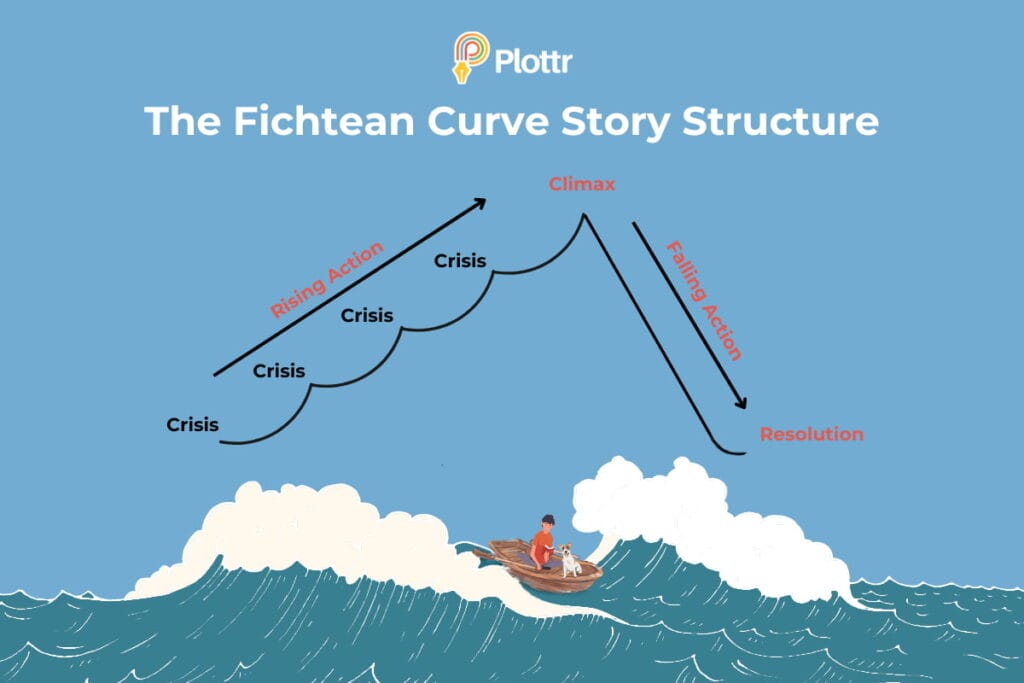
Who is the Fichtean Curve Plot Structure for?
The Fichtean Curve plot structure would work well for writers of fantasy, mysteries, and thrillers because of the way the story stacks up the action before dissolving into a satisfying ending.
Pantsers may also find this plot particularly easy to work with, given its more free-flowing structure.
Plot Points of the Fichtean Curve Plot Structure Template
The Fichtean Curve Plot Structure Template in Plottr has six distinct parts, with three to four crisis moments — although you can certainly add more if your story needs it.
Rising Action – Crisis 1
Your story should start smack-dab in the middle of a crisis. Your protagonist is introduced as they deal with the crisis, including hints of their external and internal goals, backstory, and character arc.
Example: In the James Bond film, Skyfall, James Bond finds a fellow MI6 agent dying and the hard drive of a nearby laptop missing in the opening scene. Bond chases the person responsible — a professional hitman named Patrice — in an extended sequence across the city, but is shot and presumed dead in the process.
Rising Action – Crisis 2
Things continue to go downhill for the hero/heroine, with trouble piling up. Fold in the fallout from previous actions while showing lessons learned and bits and pieces of their backstory. Don’t forget to tackle the subplots along with the crisis.
Example: Several months later, M, Bond’s MI6 boss, thinks Bond is dead, but learns the missing hard drive contains the names of embedded undercover NATO agents. She’s blamed for Bond’s failure to recover the hard drive. As M is away from the building, there’s an explosion at MI6 headquarters. Meanwhile, Bond, who’d faked his death, sees the explosion and returns from the dead to help — only to have to go through agent training again.
Rising Action – Crisis 3
Nothing goes right for the protagonist as yet another crisis happens, which could include dealing with the fallout of the second crisis. You can add character growth along the way to the final resolution, too.
Example: Bond eventually tracks Patrice down in Shanghai, where he encounters Patrice and has another showdown that ends with Patrice falling to his death. Bond then rifles through Patrice’s things and finds more clues.
Rising Action – Crisis 4
The protagonist continues to recover from the previous crises and may even have learned a few lessons along the way. Things might seem to be going well at this point, but then comes Crisis 4 to muck things up as we near the story’s climax.
You can add more crises before the climax if your story warrants it. Remember, though: some hope and a slight reduction in tension is necessary to prevent exhausting the reader (and your hero/heroine).
Example: The action continues to rise and fall, with Bond sometimes gaining ground and sometimes losing ground as he finds other clues along the way.
Climax
At this point in your story, the protagonist has weathered the previous crises and now faces the ultimate conflict — something that’s not solved easily. The hero or heroine must put into practice what they’ve learned from the previous conflicts. You choose whether they will rise to the occasion or slide back into their old ways and fail.
Example: The final showdown between Bond and Silva, the villain behind the plot, happens at Bond’s Scottish estate. M is present, and though Bond ends up killing Silva, he doesn’t manage it before the antagonist shoots M. She dies of her wounds.
Falling Action
This is the story wrap-up section, where you’ll resolve all the character arcs, subplots, and other loose ends. There should be a transformation of the hero/heroine, for better or worse. The plot structure ends with the changed protagonist back in their ordinary world.
Example: Bond, brokenhearted but determined to get back to work, returns to London, where he finds his new M ready to deploy him in the field once more.
How Do You Use the Fichtean Curve Plot Structure in Plottr?
First, make sure that you have an active Plottr membership or sign up for our free trial. Then follow these steps to get going with the Fichtean Curve plot structure template:
- Step 1: Open Plottr, and under Files click Create from Template
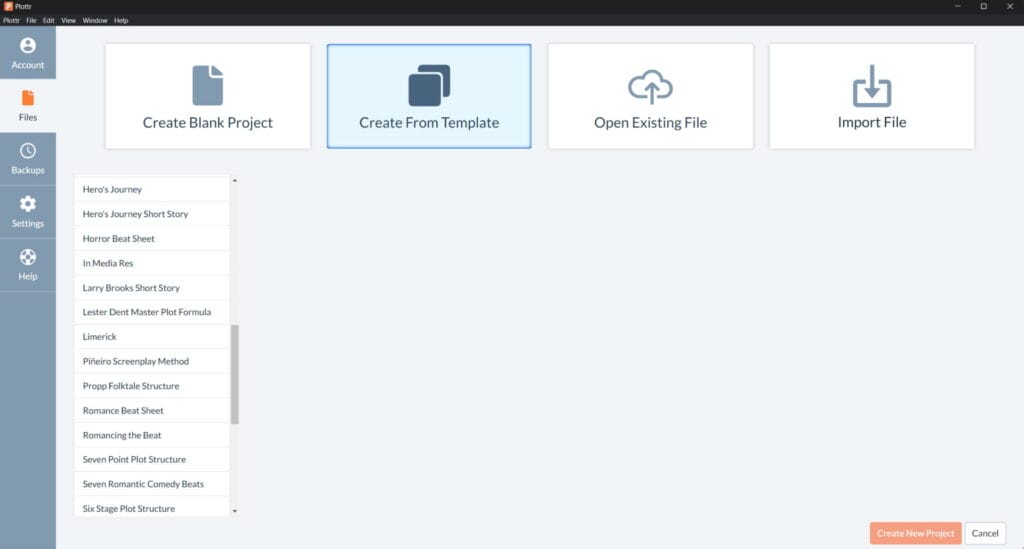
- Step 2: Scroll to Fichtean Curve, select this template, then click Create New Project
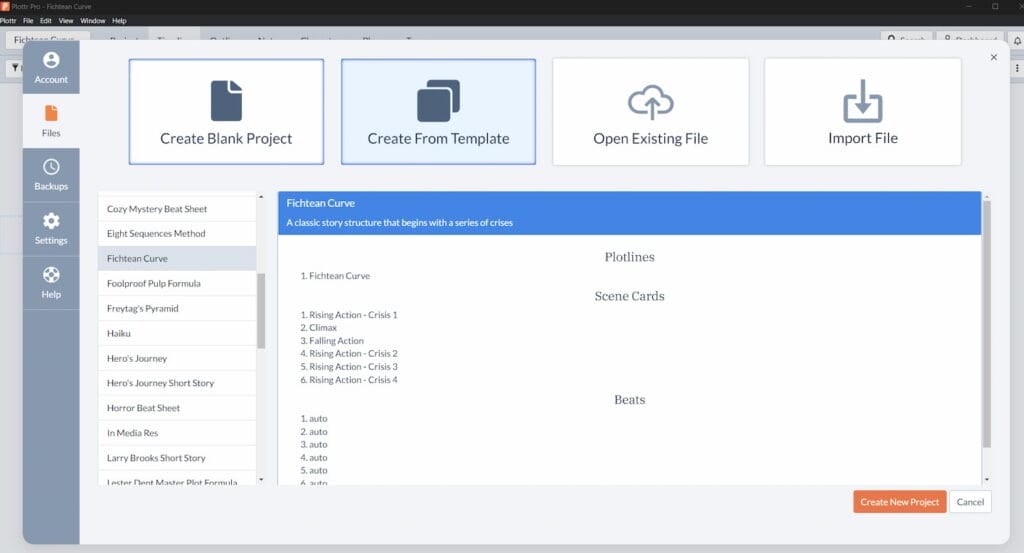
- Step 3: Name your project (you’ll be able to open it any time from your project list) and the template will open in timeline view
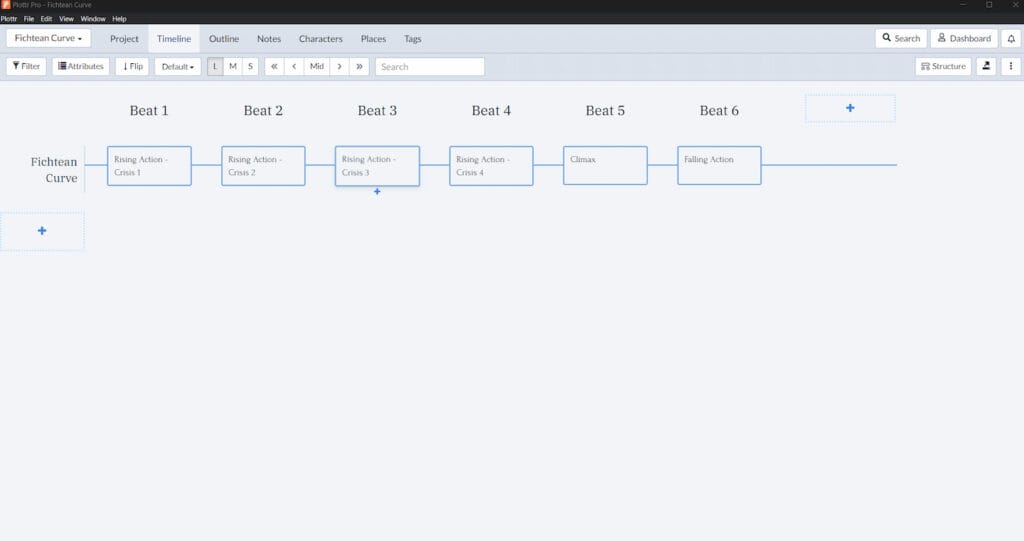
- Step 4: Click any of the scene cards in the plotline to read the beat’s guidelines and start adding your own ideas
If you want to add a subplot or secondary arc, just click the + below the name of the template on the left. The Fichtean Curve goes well with other templates that are similar in length:
Curve Your Way to a Great Story
How will you use the Fichtean Curve Plot Structure to tell your story? Jump into Plottr with a free trial today to get started. Then, tell us what you think in the comments section below.
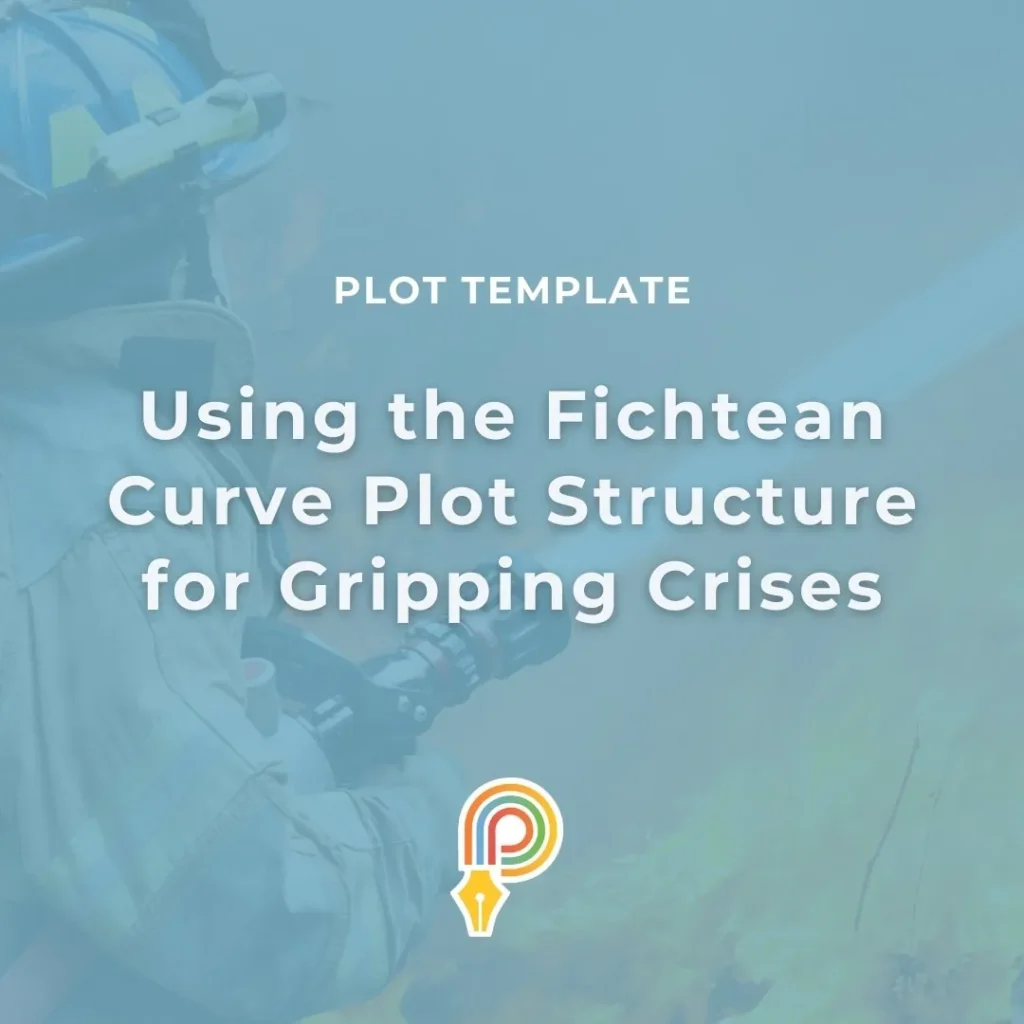




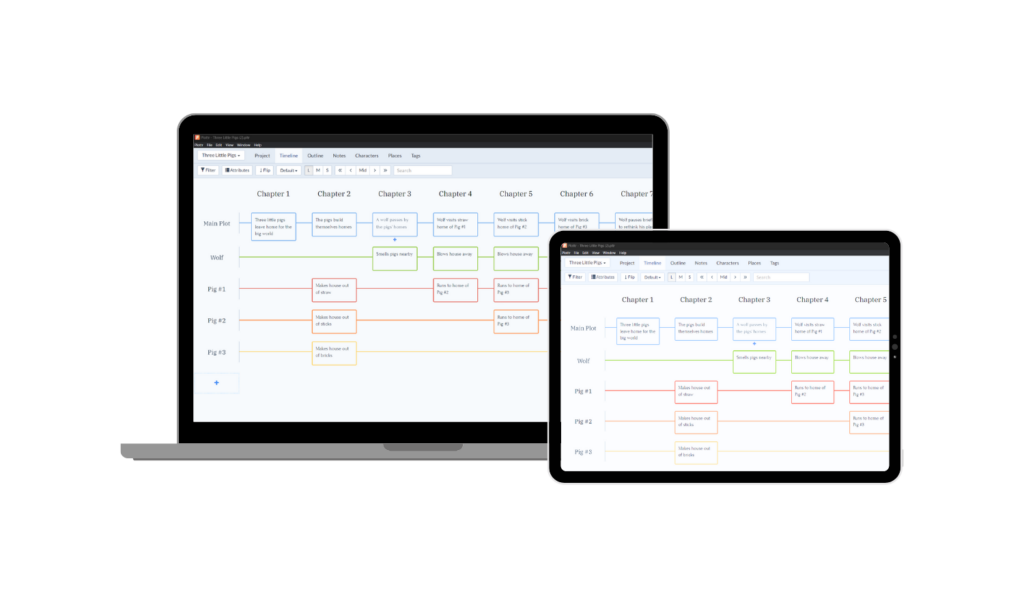
Comments